IDENTIFICATION OF HUON TREE KANGAROO (Dendrolagus matschiei) HABITAT IN PAPUA NEW GUINEA (PNG) THROUGH INTEGRATION OF REMOTE SENSING AND in situ DATA
-
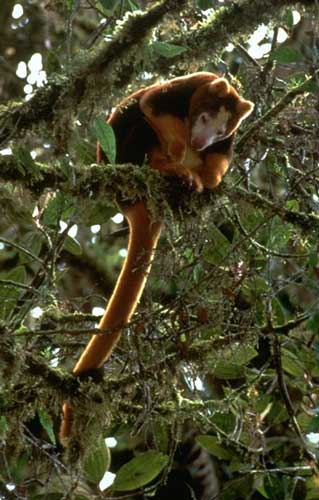 The island of New Guinea, located directly north of the Australian continent, is the world’s largest and highest tropical island and is considered one of four remaining “major tropical wilderness areas” (along with Northwest Amazonia, the Guyana Shield, and the Congo basin). Papua New Guinea (PNG), which occupies the eastern half of the island, and its western neighbor Irian Jaya are both members of an elite group of nations which combined may account for 60-80% of the world’s biodiversity (Mittermeier and Werner, 1998). PNG is considered to have high potential for conservation efforts due to the high percentage of remaining forest, high species richness and endemism, and relative lack of comprehensive protected areas (Dinerstein and Wikramanayake,1993; Osborne, 1995).
The island of New Guinea, located directly north of the Australian continent, is the world’s largest and highest tropical island and is considered one of four remaining “major tropical wilderness areas” (along with Northwest Amazonia, the Guyana Shield, and the Congo basin). Papua New Guinea (PNG), which occupies the eastern half of the island, and its western neighbor Irian Jaya are both members of an elite group of nations which combined may account for 60-80% of the world’s biodiversity (Mittermeier and Werner, 1998). PNG is considered to have high potential for conservation efforts due to the high percentage of remaining forest, high species richness and endemism, and relative lack of comprehensive protected areas (Dinerstein and Wikramanayake,1993; Osborne, 1995).Many previous ecological studies in PNG have focused on the development of species inventories which document the biodiversity of a region (Flannery, 1995; Takeuchi, 1999). However, since maintenance of the biological integrity of terrestrial ecosystems over the long term will require conservation of large, contiguous tracts of forests, some researchers have proposed a move away from the production of species inventories to studies which undertake the identification of species which play key roles in existing ecosystems (Dinerstein and Wikramanayake,1993). The emphasis of these studies would shift from attempting to identify, catalougue and map all species, to actively assisting in conservation projects which attempt to maintain community and ecosystem function (Osborne, 1995).
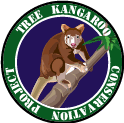 One example of such an effort is the ongoing Tree Kangaroo Conservation Program (TKCP). This program began in 1996 as a focused species study of threatened tree kangaroos on the Huon Peninsula in PNG. Tree kangaroos are the largest mammals in the PNG rainforest and under pressure from increasing habitat destruction and over hunting. Since then the program has expanded into a comprehensive community-based effort to preserve rainforest habitat. 2001 marks the program’s sixth year working in PNG. In the first five years
One example of such an effort is the ongoing Tree Kangaroo Conservation Program (TKCP). This program began in 1996 as a focused species study of threatened tree kangaroos on the Huon Peninsula in PNG. Tree kangaroos are the largest mammals in the PNG rainforest and under pressure from increasing habitat destruction and over hunting. Since then the program has expanded into a comprehensive community-based effort to preserve rainforest habitat. 2001 marks the program’s sixth year working in PNG. In the first five years 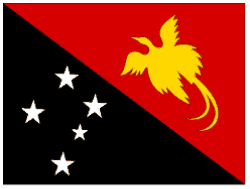 the program successfully documented tree kangaroo natural history and made initial estimates of wild tree kangaroo populations. Just as importantly, the program has established relationships with landowners, national and local government representatives, and other conservationists in PNG. These relationships have put the program in a position to pursue and achieve more ambitious goals in the years ahead. Chief among these goals is the establishment of a large Wildlife Management Area (WMA) in tree kangaroo habitat.
the program successfully documented tree kangaroo natural history and made initial estimates of wild tree kangaroo populations. Just as importantly, the program has established relationships with landowners, national and local government representatives, and other conservationists in PNG. These relationships have put the program in a position to pursue and achieve more ambitious goals in the years ahead. Chief among these goals is the establishment of a large Wildlife Management Area (WMA) in tree kangaroo habitat.The project described in these pages seeks to bring the capabilities of Remote Sensing technology to the efforts of the TKCP by providing the first comprehensive data on the distribution of suitable habitat for the Huon Tree Kangaroo (Dendrolagus matschiei). This effort will involve the classification of Landsat-7 enhanced thematic mapper (ETM+) satellite imagery to create an accurate and up to date landcover map of the area of interest, and to use this map in conjunction with existing field data documenting population density of the Huon Tree Kangaroo (Dendrolagus Matschiei) in an attempt to identify preferred habitat for the species.
 Home
Home Browse
Browse Close
Close Events
Events Maps
Maps Email
Email Brightspace
Brightspace eCampus
eCampus



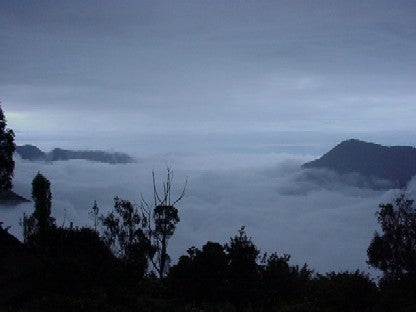 PNG is a country of very rugged terrain and high rainfall; where as much as two thirds of the land is covered with undisturbed moist tropical forest. There are over 34 million hectares of this forest in the country, and it remains one of the few tropical locations worldwide where habitat loss and deforestation have occurred at relatively low levels (Beehler, 1993). PNG is home to over 15,000 species of plants-including 2000 orchids and over 2000 types of ferns-and contains ecosystems ranging from coastal savanna, through lowland and montane rainforest, to subalpine forest and alpine grassland (Johns, 1993).
PNG is a country of very rugged terrain and high rainfall; where as much as two thirds of the land is covered with undisturbed moist tropical forest. There are over 34 million hectares of this forest in the country, and it remains one of the few tropical locations worldwide where habitat loss and deforestation have occurred at relatively low levels (Beehler, 1993). PNG is home to over 15,000 species of plants-including 2000 orchids and over 2000 types of ferns-and contains ecosystems ranging from coastal savanna, through lowland and montane rainforest, to subalpine forest and alpine grassland (Johns, 1993).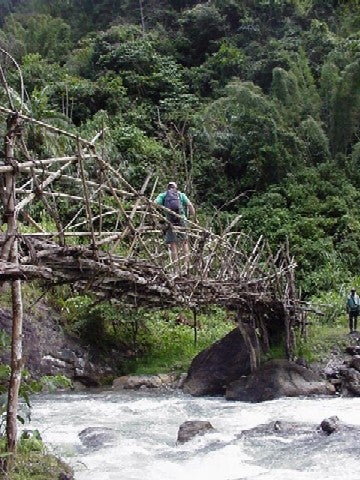 receives annual rainfall of between 250 and 350 cm (Osborne, 1995). PNG lies at the collision of the Australian and Pacific tectonic plates and is a geologically young and active region which contributes to its considerable landscape, ecosystem and species diversity (Agardy and Pernetta, 1993).
receives annual rainfall of between 250 and 350 cm (Osborne, 1995). PNG lies at the collision of the Australian and Pacific tectonic plates and is a geologically young and active region which contributes to its considerable landscape, ecosystem and species diversity (Agardy and Pernetta, 1993).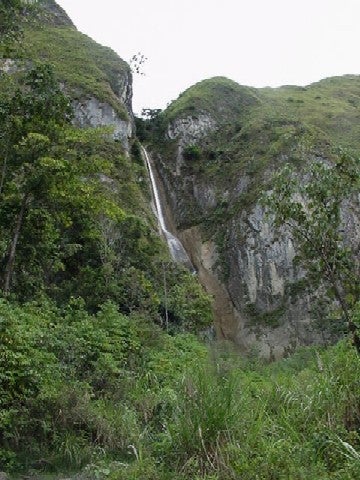 Because the mountains are so young there has been less time for specialized high altitude mammals to evolve as they have on the Central Ranges in PNG. As a result some mid-montane species have expanded their range to higher altitudes (Flannery, 1995). Among these species is the endemic Huon tree kangaroo (Dendrolagus matschiei). The Huon is also home to an estimated 5000 species of plants making it one of the richest areas in New Guinea (Johns, 1993). The Sarawaged Range, east of the Finisterre, includes at least five species of endemic frogs (Allison, 1993) and is also important to the study and conservation of nonmarine invertebrates (Miller et al., 1993). The northern Huon coast contains large areas of raised coral reef terraces which are also subject to rapid uplift, and are considered a priority area for conservation (Agardy and Pernetta, 1993).
Because the mountains are so young there has been less time for specialized high altitude mammals to evolve as they have on the Central Ranges in PNG. As a result some mid-montane species have expanded their range to higher altitudes (Flannery, 1995). Among these species is the endemic Huon tree kangaroo (Dendrolagus matschiei). The Huon is also home to an estimated 5000 species of plants making it one of the richest areas in New Guinea (Johns, 1993). The Sarawaged Range, east of the Finisterre, includes at least five species of endemic frogs (Allison, 1993) and is also important to the study and conservation of nonmarine invertebrates (Miller et al., 1993). The northern Huon coast contains large areas of raised coral reef terraces which are also subject to rapid uplift, and are considered a priority area for conservation (Agardy and Pernetta, 1993).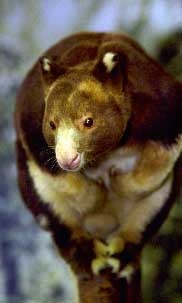 Tree kangaroos are classified in the family Macropodidae, genus Dendrolagus. Nine species of tree kangaroos have been identified to date, two in far north Queensland, Australia and the remaining seven on the island of New Guinea. All are forest dwellers and the four species found in PNG occupy habitat in rugged mountainous terrain.
Tree kangaroos are classified in the family Macropodidae, genus Dendrolagus. Nine species of tree kangaroos have been identified to date, two in far north Queensland, Australia and the remaining seven on the island of New Guinea. All are forest dwellers and the four species found in PNG occupy habitat in rugged mountainous terrain.
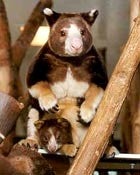
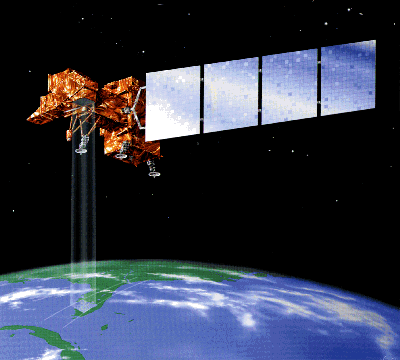 Remote sensing can be loosely defined as the process of obtaining information about an object without touching it. More specifically, remote sensing refers to the process in which a sensor mounted on some type of platform collects data about a region of interest from a distance. Historically, platforms and sensors have ranged from simple cameras attached to pigeons to more sophisticated camera/aircraft systems. More recently they have come to include high altitude satellites equipped with complex digital sensors which are capable of collecting information over a wide range of the electromagnetic spectrum. The advanced capabilities of these recent systems have led to the expanding use of remotely sensed imagery for ecological research.
Remote sensing can be loosely defined as the process of obtaining information about an object without touching it. More specifically, remote sensing refers to the process in which a sensor mounted on some type of platform collects data about a region of interest from a distance. Historically, platforms and sensors have ranged from simple cameras attached to pigeons to more sophisticated camera/aircraft systems. More recently they have come to include high altitude satellites equipped with complex digital sensors which are capable of collecting information over a wide range of the electromagnetic spectrum. The advanced capabilities of these recent systems have led to the expanding use of remotely sensed imagery for ecological research.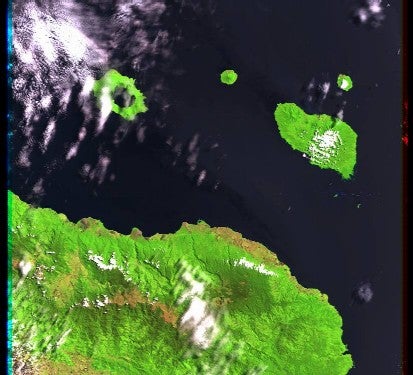 measure a broad range of the electromagnetic spectrum (multi-spectral). In addition, satellite remote sensing imagery has also become increasingly available and affordable in recent years, allowing the application of digital image processing techniques to a wide variety of research uses. Much of this research involves the attempt to evaluate and quantify the relationship between landcover and ecological processes and to examine how the earth is changing and what the consequences of these changes are for living things.
measure a broad range of the electromagnetic spectrum (multi-spectral). In addition, satellite remote sensing imagery has also become increasingly available and affordable in recent years, allowing the application of digital image processing techniques to a wide variety of research uses. Much of this research involves the attempt to evaluate and quantify the relationship between landcover and ecological processes and to examine how the earth is changing and what the consequences of these changes are for living things.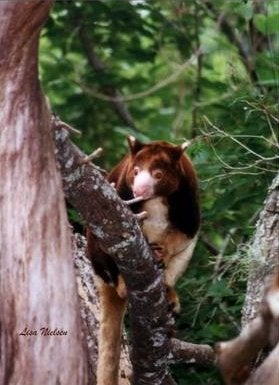 In 1993, the PNG Department of Environment and Conservation conducted a national Conservation Needs Assessment (CNA) which identified areas of concern within seven general categories: Native Flora; Warm-blooded Vertebrates; Fishes, Amphibians, and Reptiles; Nonmarine Invertebrates; Freshwater Wetlands; Coastal and Marine Ecosystems; and Humid Forest Environments. The CNA indicated that PNG possesses rich and unique biodiversity and that immediate conservation action is necessary to protect these habitats from threats resulting from a variety of development activities.
In 1993, the PNG Department of Environment and Conservation conducted a national Conservation Needs Assessment (CNA) which identified areas of concern within seven general categories: Native Flora; Warm-blooded Vertebrates; Fishes, Amphibians, and Reptiles; Nonmarine Invertebrates; Freshwater Wetlands; Coastal and Marine Ecosystems; and Humid Forest Environments. The CNA indicated that PNG possesses rich and unique biodiversity and that immediate conservation action is necessary to protect these habitats from threats resulting from a variety of development activities.